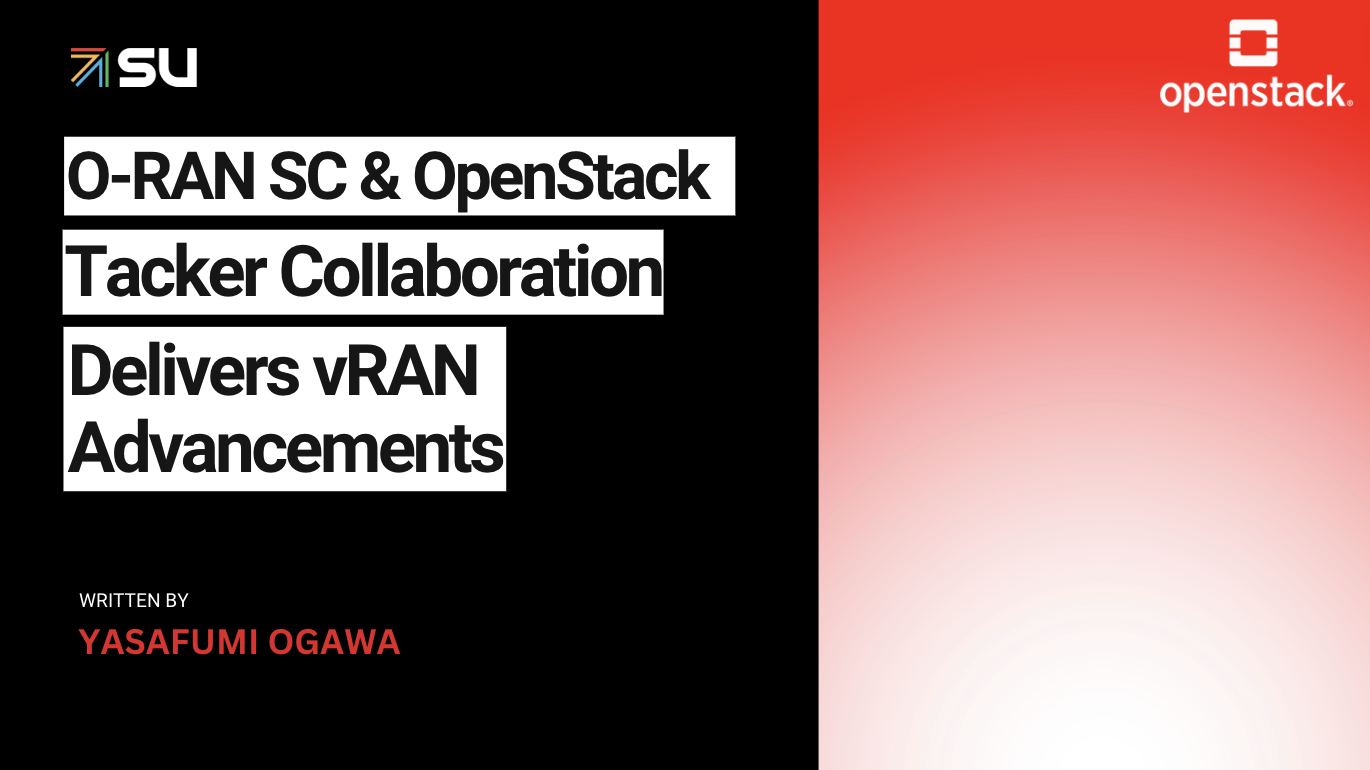OpenStack Tacker is an open source project for realizing a reference implementation of ETSI-NFV-compliant Generic Virtual Network Function Manager (G-VNFM) and NFV Orchestrator (NFVO). The Tacker team has contributed to the standards by providing several proposals for feedback or improvements to the specifications from a standpoint of view of the developer’s side via cross-community discussion.
ETSI-NFV SOL standards and OpenStack Tacker
ETSI-NFV is a group developing requirements and architecture for virtualization functions within telecoms networks and its ISG was founded in 2012 when it brought together seven leading network operators. Modern telco networks contain an ever-increasing variety of proprietary hardware, but the innovation cycles accelerate and require greater flexibility and dynamism than hardware-based appliances. Virtualized network functions allow networks to be agile and capable of responding automatically to the needs of the traffic and services running over it. It ranges from dynamically controlling the network to provisioning of networks as a service, the latter offers the capability to manage and orchestrate the virtualization of resources for the provisioning of network functions and their composition into higher-layer network services. NFV-SOL (standing for “NFV Solutions”), REST-based APIs have been specified covering the functionalities of the interfaces specified on the reference points.
Tacker is a Generic VNF Manager (VNFM) and an NFV Orchestrator (NFVO) to operate Network Services (NSs) and Virtual Network Functions (VNFs) on an NFV infrastructure platform like OpenStack or Kubernetes. The operations are based on ETSI NFV Management and Orchestration (MANO) Architecture.
SOL-based new implementations have started in Ussuri after the publications of SOL documents for NFV descriptors such as VNF descriptor (VNFD) and NS Descriptor (NSD) as NFV-SOL001, NFV-SOL004 and NFV-SOL007, and also after REST-based APIs have been specified as NFV-SOL002, NFV-SOL003, and NFV-SOL005.
The Tacker team has contributed to the standards by providing several proposals for feedback or improvements of the specifications from the standpoint of view of developer’s side.
Contributions to ETSI-NFV Standards
ETSI ISG NFV has been having regular meetings over 40 times, and we have joined from NFV#31 to make proposals. For instance, we joined to [NFV#40] (https://www.etsi.org/newsroom/blogs/technologies/entry/preparing-for-nfv-next-decade-by-planning-release-6) for presenting the feedbacks related to OAuth2.0 support. We also have proposed several other feedbacks for improving the standards or filling gaps with actual use cases in the meetings. Here is a list of our recent proposals in NFV#41 through NFV#43.
- Feedback on API versioning and backward compatibility
- Need for LCM timestamps in VNFInstance SOL model
- Attributes to store tenants of VNF instances
- Data Model for Access Info of External Monitoring Tools
- Use cases for Deployment of External Monitoring Tools
- FM/PM Interfaces in Tacker
Some proposed features have been introduced in Tacker’s recent releases, or the results of the discussions from the proposals were implemented. There are some examples of Tacker’s features introduced after Zed release.
- Support Tacker service to obtain an OAuth 2.0 access token from an external authorization server, and then use the access token to access related OpenStack services that use the external_oauth2_token filter provided by the keystone middleware for permission authentication.
- PM Threshold interfaces and CLI to support AutoScale based on ETSI NFV-SOL 003 v3.3.1.
- Add the Prometheus Plugin that has an interface between Tacker and the External Monitoring Tool. Prometheus Plugin supports data model conversion from Prometheus format data to SOL-based PM Threshold schema, and vice versa.
Forum at OpenInfra Summit Vancouver
We had a forum session at the latest Vancouver summit for sharing our requirements or issues of NFV use cases, titled “Future requirements for Tacker’s ETSI-NFV/O-RAN use cases“.
It was a cross-community discussion for the latest requirements including 5GC or vRAN.
In this forum session, we shared our cross-domain issues among the communities and discussed short and long-term goals and had feedback from not only developers but also standards, operators or vendors. For realizing a reference implementation of ETSI NFV, the standard from the perspective of developers or users for the latest topics including mixed-use cases of VMs and containers using Kubernetes were discussed in the session.
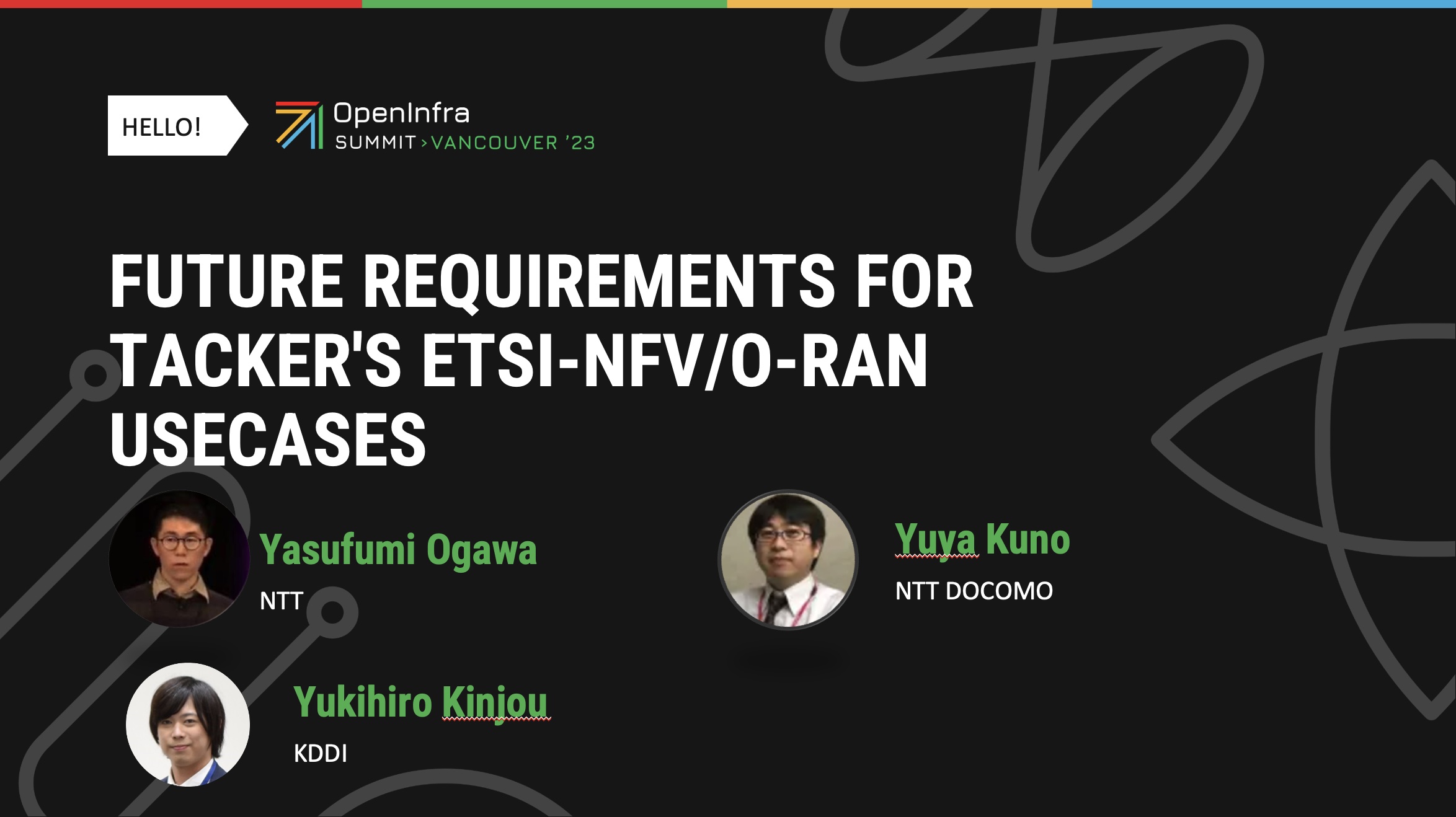
There were four main topics collected from both people of ETSI NFV and OpenStack communities interested in the session. You can find all the discussion on the session’s etherpad.
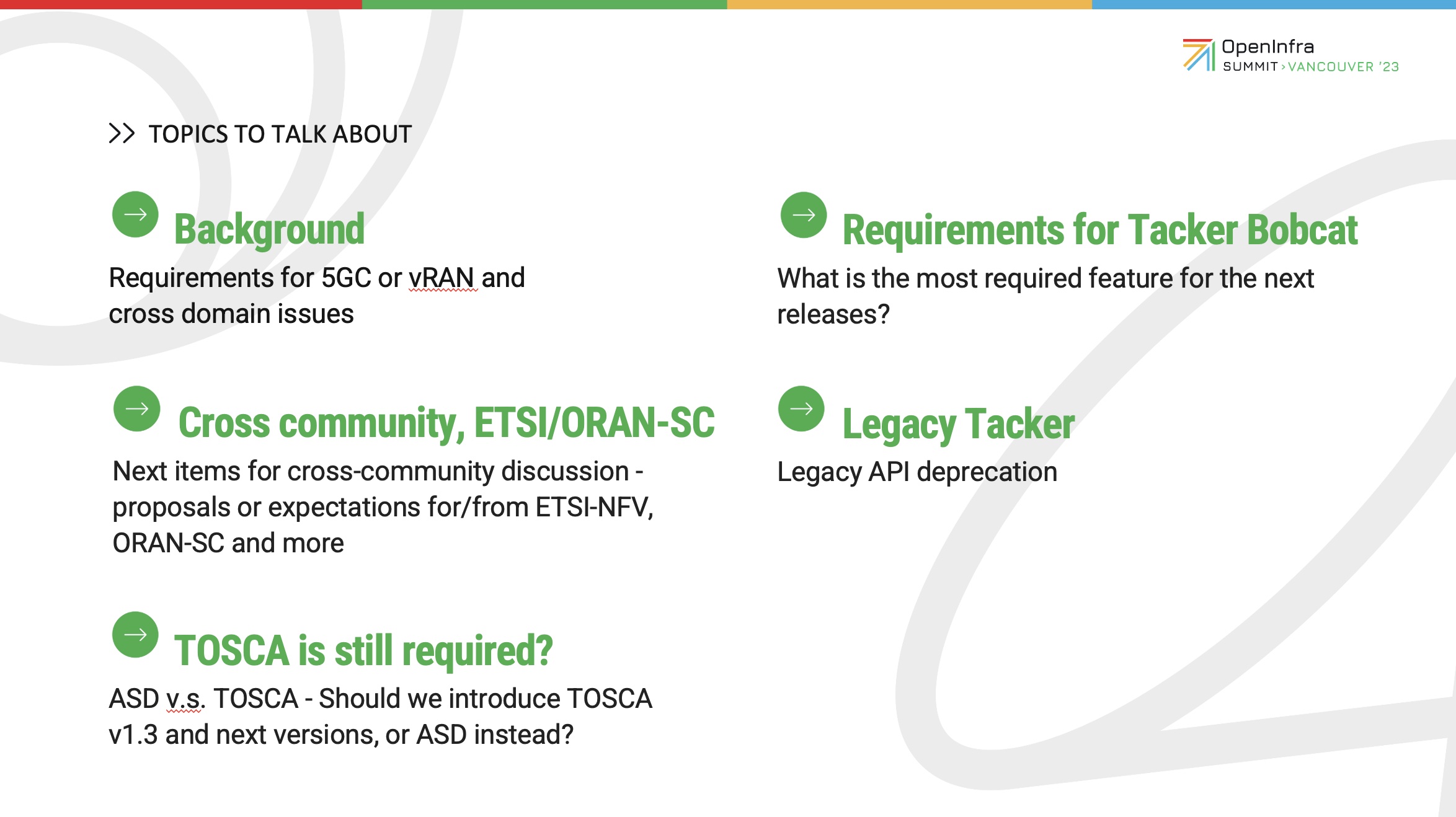
For the first topic on the agenda, “cross-community, ETSI-NFV, ORAN-SC,” it was shared the background of the collaboration and how we deploy Tacker in O-RAN SC architecture.
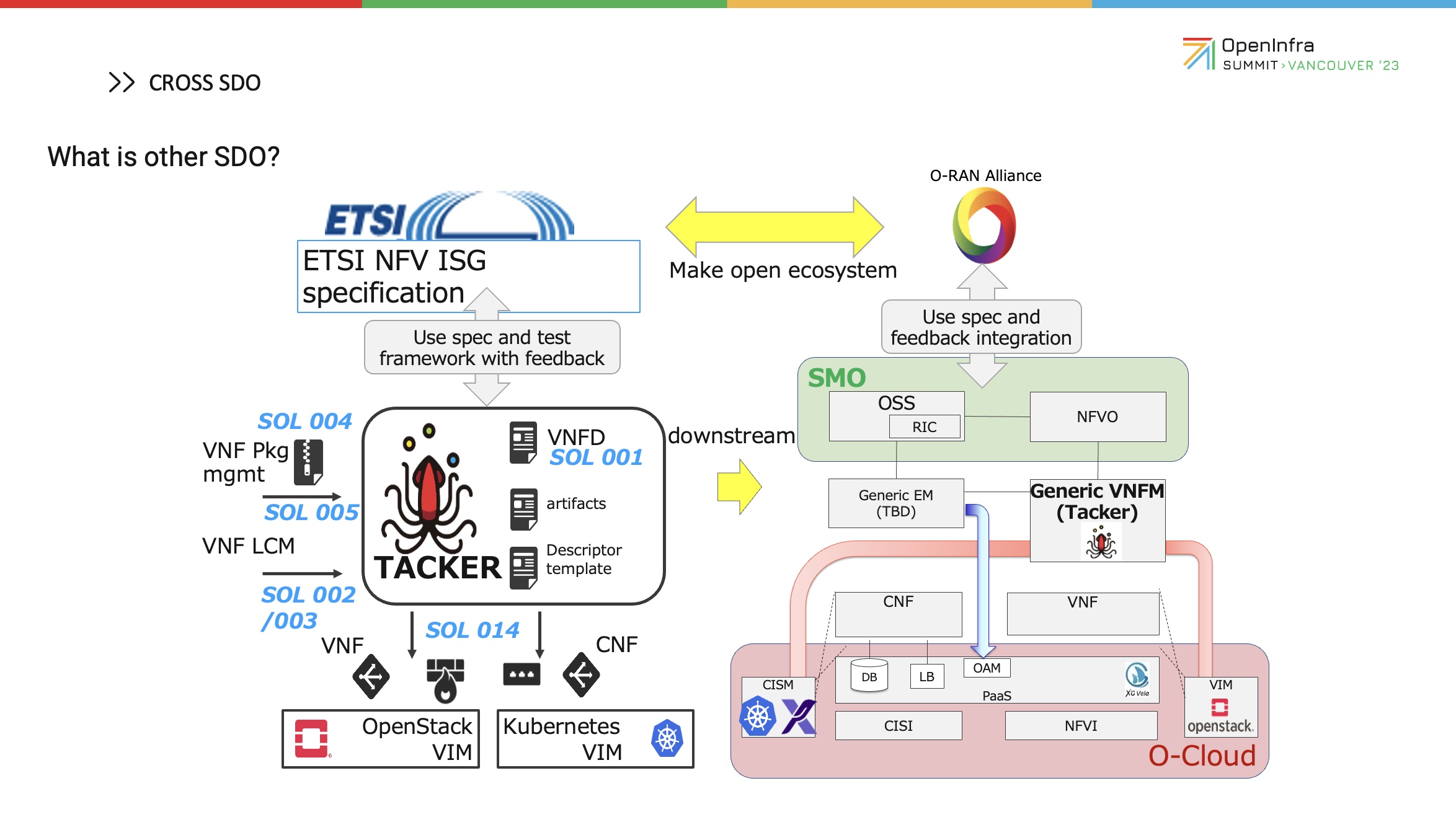
We have proposed several deployment plans for developing use cases over several cycles and contributed Tacker to be integrated into the architecture as below. In the latest H-release, we proceeded to integrate Tacker with StarlingX as O-Cloud for collecting O-cloud monitoring data using Prometheus.
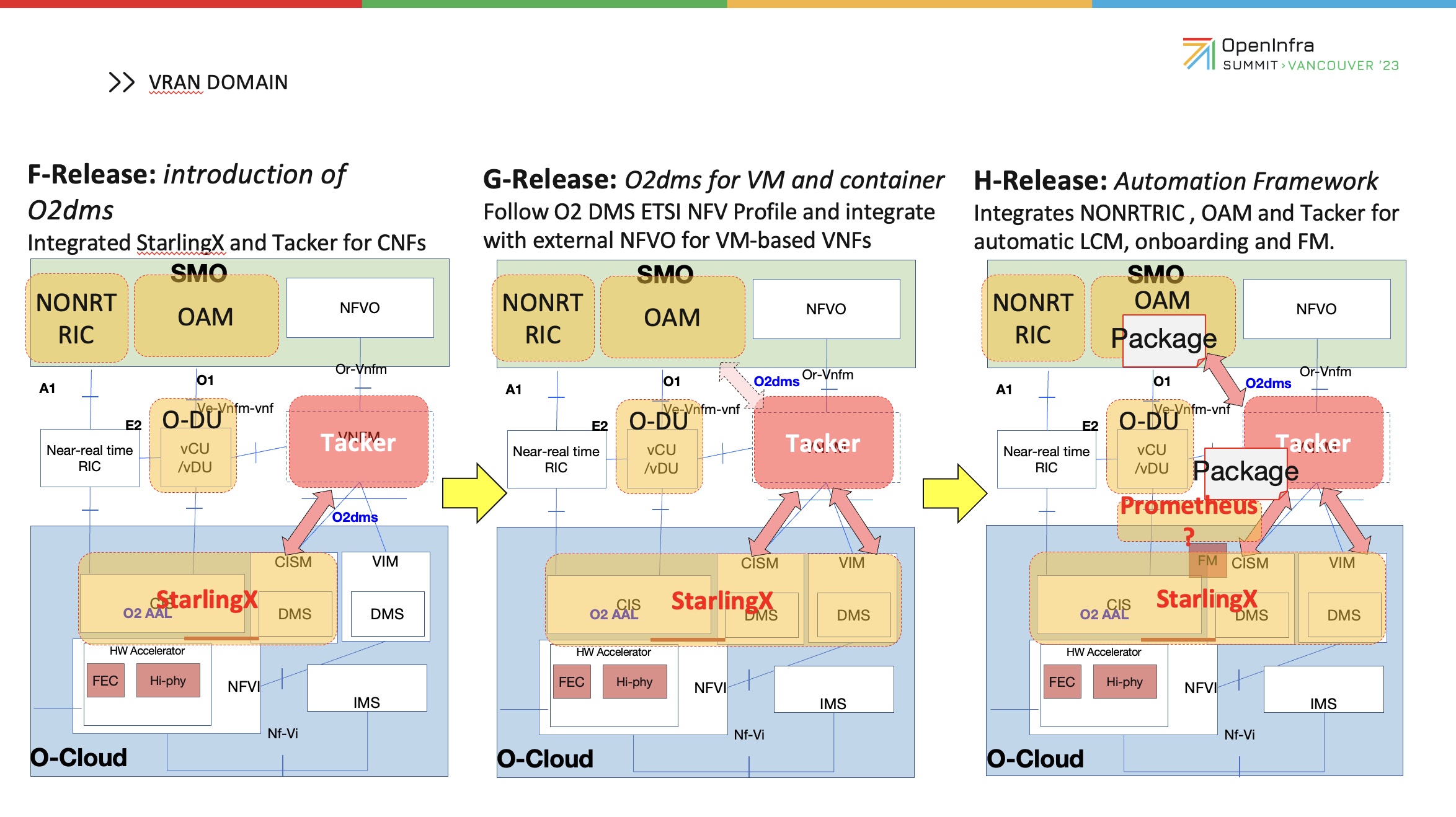
For the second topic, “Requirements for Tacker Bobcat,” there were several notable proposals from the operator’s side and feedback for the items. One of our most interesting topics was Kubernetes support for which telco operators expect to use accelerator or VNF management with operator framework, or online easy update of G-VNFM is really required from operators. What ecosystem is preferable for working with Tacker, such as cluster API, or terraform, was also discussed in the forum session.

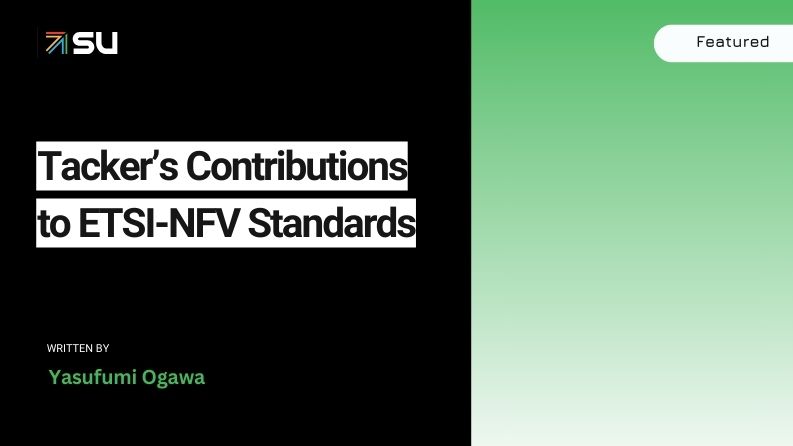)





